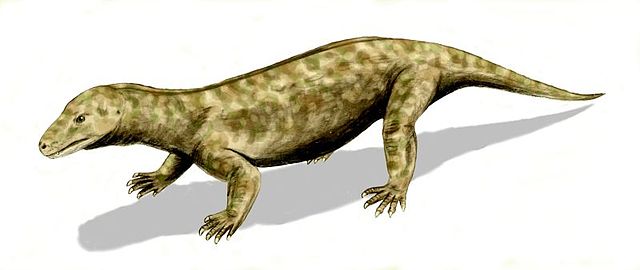Top Qs
Timeline
Chat
Perspective
1937 in paleontology
From Wikipedia, the free encyclopedia
Remove ads
Paleontology or palaeontology is the study of prehistoric life forms on Earth through the examination of plant and animal fossils.[1] This includes the study of body fossils, tracks (ichnites), burrows, cast-off parts, fossilised feces (coprolites), palynomorphs and chemical residues. Because humans have encountered fossils for millennia, paleontology has a long history both before and after becoming formalized as a science. This article records significant discoveries and events related to paleontology that occurred or were published in the year 1937.
Remove ads
Plants
Summarize
Perspective
Ferns and fern allies
Flowering plants
Magnoliids
Monocots
Basal Eudicots and unplaced core Eudicots
Superasterids - basal
Superasterids
Superrosids
Angiosperms - other
Remove ads
Arthropods
Insects
Vertebrates
Dinosaurs
Synapsids
Popular culture
Amusement parks and attractions
- August 28th: The Calgary Zoo's Prehistoric Park opened. Paleontologist Darren Tanke has described Prehistoric Park as "an extensive treed park and pathways containing numerous life-sized concrete dinosaurs and other prehistoric life". It also had "two long, walkthrough display buildings containing a Corythosaurus skeleton and individual dinosaur bones", as well as exhibits of paleozoic invertebrates and prehistoric plants. It became a popular attraction among visitors to the zoo.[8]
Literature
- In 1937, Morant imagined a feathered dinosaur-like animal that lived during the Triassic and glided about on four wings. This portrayal reflected contemporary scientific speculations attempting to reconstruct the hypothetical ancestor of birds. Fossils from China later revealed the existence of just this sort of animal.[9]
Remove ads
References
Wikiwand - on
Seamless Wikipedia browsing. On steroids.
Remove ads












